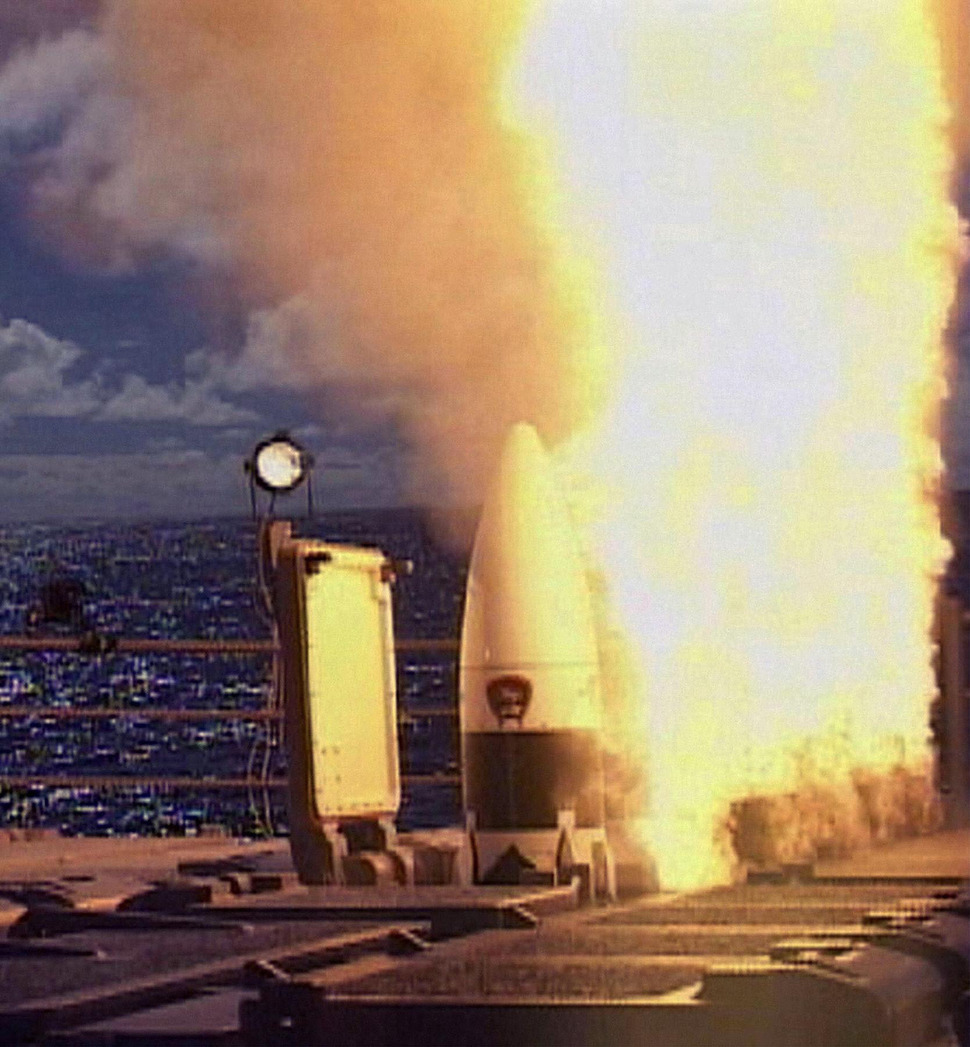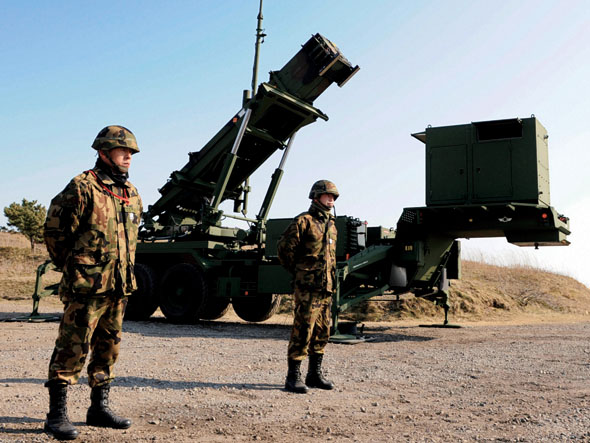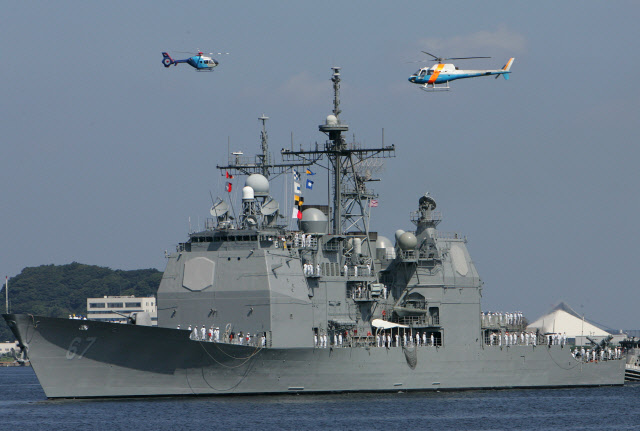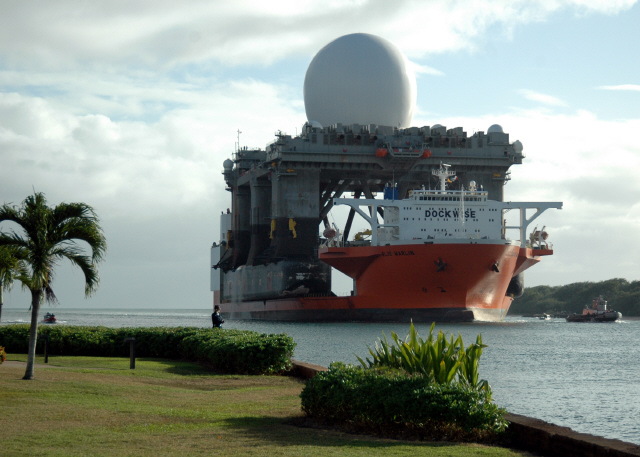Posted on : Apr.27,2015 17:00 KSTModified on : Apr.27,2015 17:00 KST
 |
US-Japan missile technology cooperation on SM-3 interceptor missiles since 1987 |
A little over a year and a half ago on Oct. 3, 2013, South Korean received some shocking news like a bolt from the blue. “We welcome Japan’s efforts, including its exercise of collective self-defense,” came the message.
It was an open expression of support from the US for Japan’s new collective self-defense rights, with Washington declaring at a U.S.-Japan Security Consultative Committee (2+2) meeting that day that it would “greatly bolster the US-Japan alliance’s capabilities in responding to a changing security environment in the Asia-Pacific region.” Until then, the prevailing mood in South Korea had been that the US would not particularly welcome a greater military role for Japan as long as it continued to engage in historical revisionism as part of its push to “leave behind the postwar system.”
 |
In 2003 Japan decided to join missile defense system and purchased 17 PAC-3 Patriot missiles |
As specific examples of bolstered alliance capabilities, the US and Japan offered the examples that day of amended security cooperation guidelines and increased security and defense cooperation in the Asia-Pacific region and beyond. It was a declaration of the alliance’s promotion from a regional framework for potential incidents on the Korean Peninsula and Taiwan to a global one with a scope extending to the “Asia-Pacific region and beyond.” A year later, the US declared that the strategic goals and interests of the US-Japan alliance were perfectly aligned, and that amendment of the guidelines conformed to the US’s rebalancing policy toward the Asia-Pacific region. The message made it official: the US’s “rebalancing Asia” policy meant a stronger US-Japan alliance.
 |
Japanese navy purchased four Aegis destroyers equipped with missile defense equipment |
The two countries appear to have two goals for their stronger alliance.
“The main goal of this guideline amendment appears to be for the Japan Self-Defense Forces help the US and contribute to the security of crude oil pipelines between the Middle East and East Asia,” said Kyoji Yanagisa, deputy minister of the Cabinet during Abe’s first term, in an interview with the Hankyoreh.
If the guidelines are amended as expected on Apr. 27, Japan will be able to engage in mine removal in the Strait of Hormuz and provide “rear support” for the US, Australia, South Korea, and occasional ASEAN powers working in the region. Washington is also demanding that Japan take on reconnaissance duties in the South China Sea.
The rapid expansion applies not just to the geographic scope of Japan’s activities, but also their nature. Japan’s rear support role to date has been limited to non-combat activities such as fueling, water supply, and medical assistance. With the changes, it could grow to include ammunition distribution and fueling for fighter planes as they prepare for takeoff. The US Marines‘ V-22 Osprey vertical takeoff and landing aircraft and the state-of-the-art stealth F-35B Lightning II fighter, another vertical takeoff and landing aircraft slated for deployment to Japan in 2017, would be able to receive ammunition and fuel from one of Japan’s Izumo-class helicopter destroyers (with displacement of 19,500 tons) before making sorties.
The target in this case would be China, which is currently under fire for throwing its weight around in the East and South China Seas. Military integration of the US and Japan, in conjunction with other neighbors, would form a tight circle around China.
 |
AN/TPY-2 X-band radar detection and tracking systems in Aomori and Kyoto |
Another change involves greater collaboration on missile defense. The US and Japan are currently offering missile defense as a measure against the North Korean nuclear and missile threats. But it is expected by many to develop more into a means of neutralizing China’s missile strike capabilities. Japan has purchased 17 Patriot (PAC-3) missiles and four Aegis destroyers equipped with missile defense equipment, while USFJ has already positioned two state-of-the-art AN/TPY-2 X-band radar detection and tracking systems in Aomori and Kyoto. The two countries have also set up an integrated missile defense management center at Yokota Air Face that would enable them to engage in joint detection, tracking, and interception operations for missiles launched by an enemy.
With the US keeping it on a relatively tight lead, Japan appears unlikely to go the same militarist route as in the past, as some have feared. A stronger US-Japan alliance is also in South Korea’s own interest as a stronger deterrent against North Korea. But the increased military role for Japan, which has sometimes been at odds with South Korea in terms of strategic interests, is likely to surface in the future as a potential headache for Seoul. Many have also voiced ongoing concerns about whether South Korea - which currently lacks wartime operational control over its own military - would actually be able to prevent a Korean Peninsula landing by the JDSF on the pretext of offering “rear support.”
The next aims for the US-Japan alliance are stronger trilateral and multilateral alliances with South Korea and Australia, among others. Having already secured a trilateral intelligence sharing agreement with South Korea last December, the US is now pressuring it into allowing the deployment of a THAAD missile system on the peninsula. But if Seoul lets itself get drawn into a trilateral alliance without adequate reflection, it could end up sacrificing other diplomatic opportunities in the form of improved relations - and eventual reunification - with North Korea and a deeper strategic partnership with China. The loss to Korea’s own interests would be irretrievable.
By Park Hyun and Gil Yun-hyung, Washington and Tokyo correspondents
Please direct questions or comments to [english@hani.co.kr]
english.hani.co.kr/arti/english_edition/e_international/688624.html









